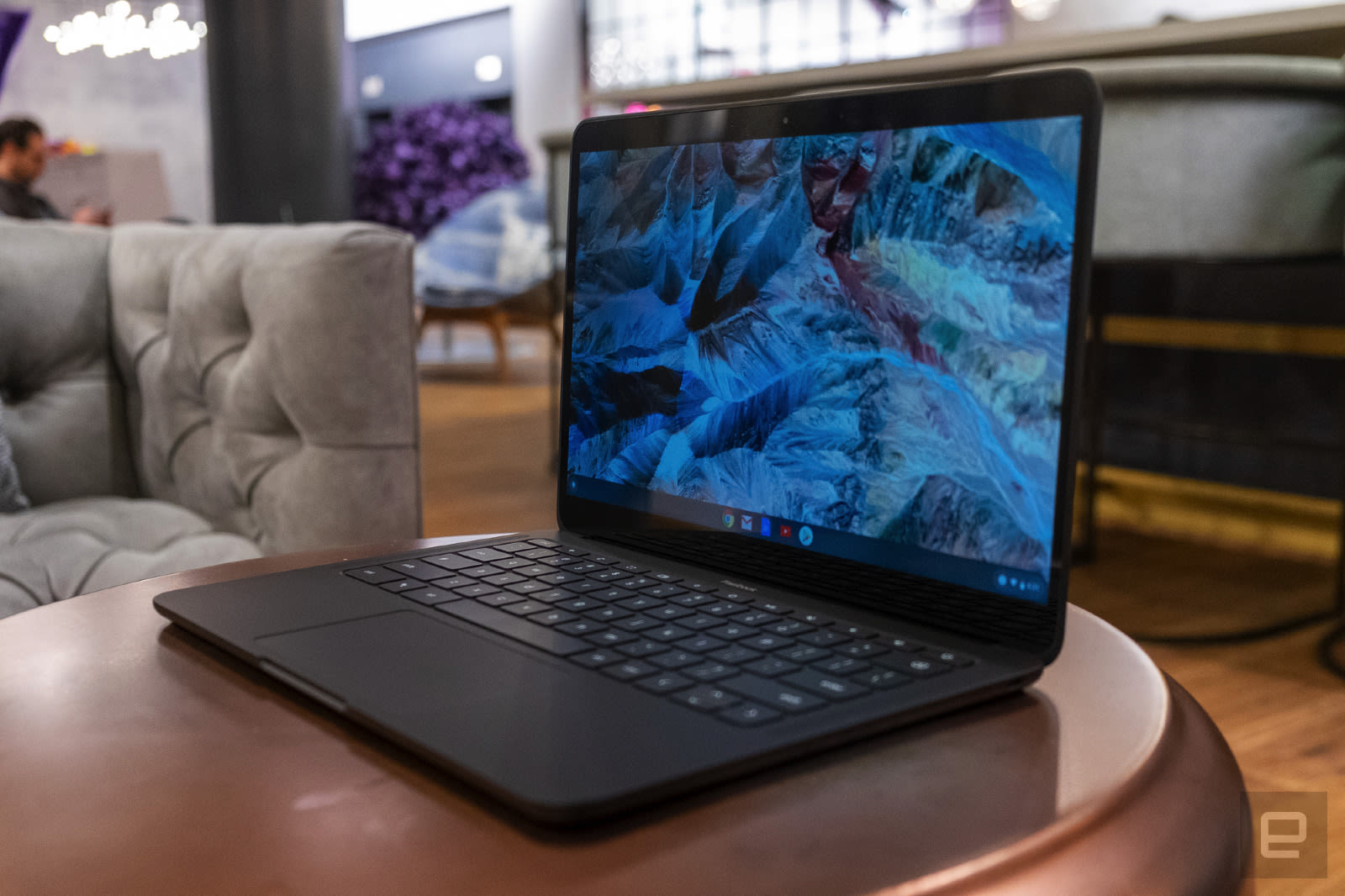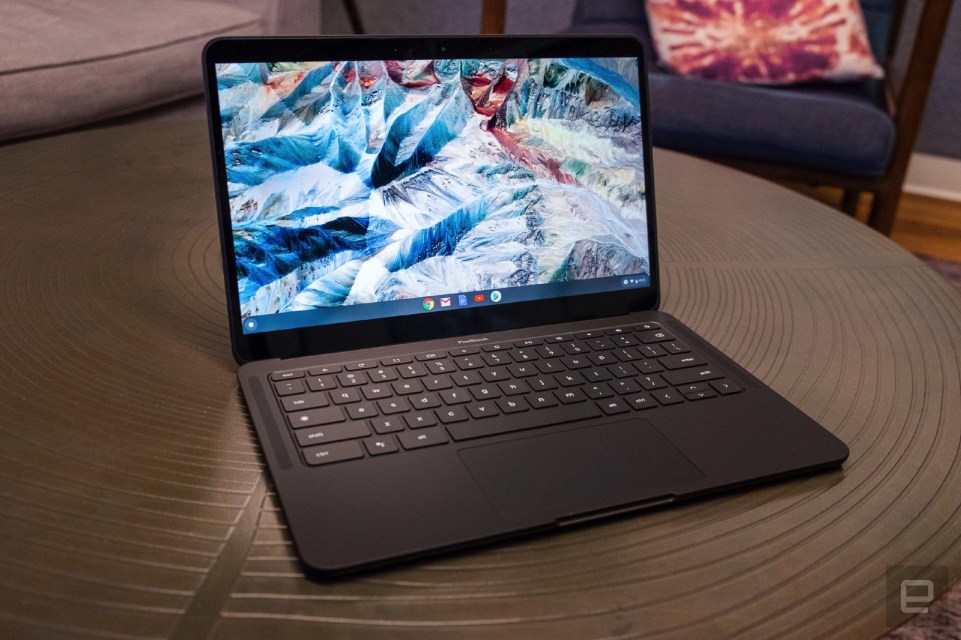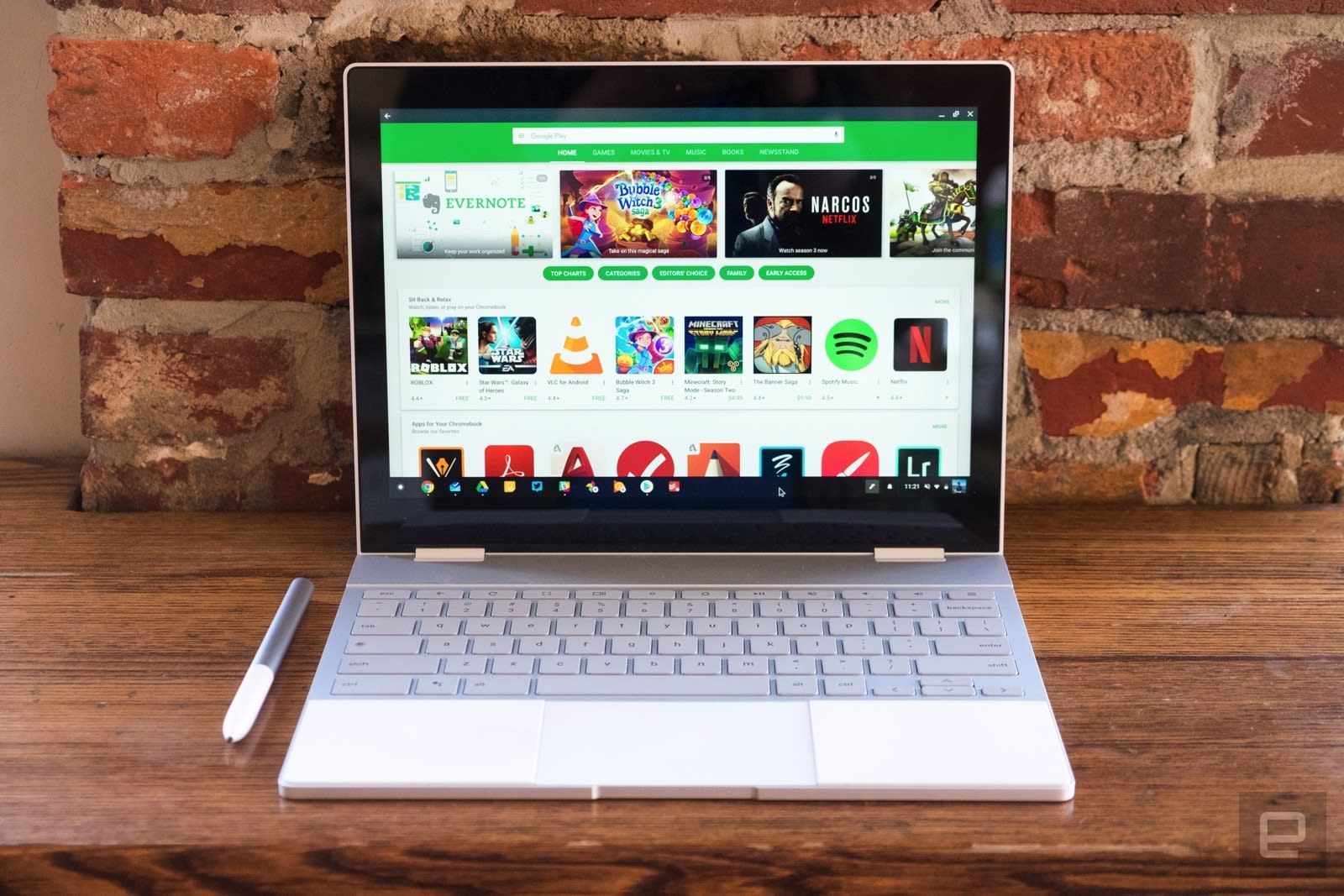Sponsored Links
Google has been building its own Chromebooks for a while now -- first, there were two iterations of the Chromebook Pixel, and then there was 2017's Pixelbook. All three were great laptops with one glaring flaw: They cost way too much money. We're talking $1,000 or more, at a time when most Chromebooks were $500 or less. Google is back at it this year with the new Pixelbook Go -- but for the first time, the company is no longer aiming for absolute quality regardless of price, just to prove a point.
Instead, Google is trying to build a Chromebook that anyone can use and afford: The Pixelbook Go starts at $649, a full $350 less than the original Pixelbook. It's still a lot of money for a Chromebook. But there are plenty of other manufacturers building premium Chromebooks in that price range now. The Pixelbook Go certainly can hold its own against just about any other Chromebook out there. But unfortunately, in its quest to get the price down, Google also sacrificed a lot of what made the original Pixelbook so intriguing in the first place. The question is whether those trade-offs are worth it.
Gallery: Google Pixelbook Go review | 12 Photos
Engadget Score
Pros
- Excellent keyboard
- Good performance and battery life
- The Chrome OS platform is solid and stable
- Thin and light design with strong build quality
Cons
- Display isn’t as good as the original Pixelbook
- Trackpad isn’t the smoothest
- Slightly expensive for a Chromebook
- It’s a bit boring to look at
Summary
Google’s most affordable Chromebook yet is a solid all-around laptop. It’s not as eye-catching as the original Pixelbook, and Google cut a few corners to get the price down (most notably the display).. But the Pixelbook Go covers the basics well and should serve most people well.
Hardware
All of Google's previous Chrome OS devices, had premium hardware and specs, with very few corners cut. With the Pixelbook Go, Google is changing the formula slightly. It's a solid, well-made device that doesn't feel cheap, something we can't say about other Chromebooks. But visually, it's far less interesting than the model it replaces.
The Go is a basic-looking clamshell laptop with a 13.3-inch, 1080p touchscreen and a black paint job, nondescript except for a small 'G' logo in the corner of the lid. It also comes in a light pink shade with a bright coral underside -- a more distinctive combo, though the all-black design is undoubtedly more elegant. (Fans of the black MacBook from the last decade should be pleased.) Regardless of color, the Go is sturdy and well-built but doesn't have any of the distinctive design elements you'll find on the original Pixelbook. It's thicker than that device, though it weighs about the same at 2.3 pounds. I definitely miss the aesthetics of the original, particularly its glass-and-aluminum lid that echoed the design of Google's Pixel phones. The Go has a functional, utilitarian design, which I can appreciate, but I wish it were slightly more exciting.

There is one new, funky design flourish to be found on the Pixelbook Go: its ridged underside. When I first saw pictures of the Go, my brain assumed those ridges were a a different, softer material than the magnesium that makes up the rest of the Go. I was imagining the whole bottom being a grippy plastic like the feet underneath most laptops. But in reality, it's the same hard metal. Google says it designed these ridges to make the laptop easier to grip or pull out of a sleeve, but I can't say this really solves a problem I had with other devices. Still, it's good to see Google show its playful side on this otherwise dull laptop.
Google surely simplified its design as a way to cut costs, and as such, there are some other notable omissions this time around Unlike the first Pixelbook, it's not a convertible, so tablet mode is out. That also means it doesn't work with the Pixelbook Pen stylus. I can't say I really miss these changes, though -- I've never been a fan of laptops that also try and be tablets, and the Pixelbook Pen wasn't terribly useful either.
More concerning to me is the step backward Google took with the Go's display. Both the Pixelbook and last year's ill-fated Pixel Slate had some of the best screens you could find. I particularly liked the original Pixelbook's taller aspect ratio, and both devices had higher resolutions than the Go's 1080p panel.
That's not to say the Go has a bad screen, but it is fairly pedestrian. 1080p on a 13.3-inch display works out to 166 pixels per inch, a far cry from the 235 ppi on the first Pixelbook and the impressive 293 ppi on the Pixel Slate. Google does offer the Go with a 4K screen, but that option is only available if you get the top-of-the-line model, which costs an eye-popping $1,399. The good news is that the Go has much slimmer bezels than the original Pixelbook, but I still prefer the taller and more pixel-dense display on that laptop to the Go's screen.
While the screen is a bit of a letdown, Google didn't skimp on the keyboard. The original Pixelbook offered a great typing experience, and the Go is nearly as good. It's hard to describe exactly what's different, but the keys don't feel quite as soft when you're typing. That said, there's plenty of travel and they're quiet as well -- if you hate the low-travel MacBook keyboard, you'll love the one on the Go. The trackpad, on the other hand is... just fine. It feels kind of rough under my finger, and scrolling around isn't as smooth as I'd like. It's not bad, and I got used to it, but I've definitely used better touchpads.

In use
While Google cut some corners in the design department, the Pixelbook Go is still among the more powerful Chromebooks out there. The base model pairs an eighth-generation Intel Core m3 processor with 8GB of RAM and 64GB of storage; the one I reviewed steps up to an i5 processor and 128GB of storage. That model costs $849 and has comparable specs to what you'll find in the $999 Pixelbook. I do wish I could have tried the m3 model, because I'm curious to see what kind of performance Google is offering for $650.
Unsurprisingly, Intel's Core i5 and 8GB of RAM is plenty for Chrome OS. The Pixelbook Go handled my normal workload without any notable issues. My routine involves a dozen or so browser tabs, Tweetdeck, Hangouts, Slack, Todoist, Google Keep and Trello all running as Chrome apps, along with the occasional Android app or two. Adobe's Lightroom, Netflix, YouTube Music and a smattering of games all mostly worked well, though music playback presented the occasionally "low memory" hiccup which was frustrating. Notably, this didn't happen when using YouTube Music as a browser tab. This reinforces my belief that Android apps on Chrome aren't worth using if there's a web-based alternative.
Overall, I think most people will be fine with the base configuration; power users may want to step up to the $849 model I tried. Google is also selling a $999 configuration that doubles the RAM to 16GB, while that $1,399 model I mentioned includes a Core i7 processor, 16GB of RAM, 256GB storage and a 4K display. While I'd surely enjoy that high-res screen, I don't think it's worth that kind of money.
The Pixelbook Go also holds up well on the battery side, something that wasn't always true for the original. In our video playback test, the Go ran for just over 13 and a half hours before shutting down. That's more than an hour longer than the 12-hour battery life Google claims with "mixed usage." Unfortunately, I never came close to 12 hours when putting the Go through my normal routine, but it did last more than eight hours, which is a definite improvement over the first Pixelbook.
I will note that my review Pixelbook had a weird issue where the battery life indicator didn't update properly. It showed whatever percentage it was app when it was awoken from sleep and didn't update until it went to sleep again or was plugged in. Google confirmed it was a bug with the current version of Chrome OS that would be updated by the time the device shipped. The company also confirmed that the battery was otherwise performing normally and that this was just a software issue. I'll check this again once the software update arrives and will update this review if the problem persists.
The competition
There are tons of Chromebooks you can compare the Go to, from cheap $200 devices (with specs to match), up to Google's own Pixelbook from 2017 that still sells for $1,000 or more. That said, probably the closest comparison to the Pixelbook Go is the ASUS Chromebook Flip C434, which I reviewed earlier this year. It has an m3 processor, 1080p screen, 4GB of RAM and 64GB of storage, just like the base Pixelbook Go. At $579, it's cheaper than the Go, but also thicker and heavier. It does have a 360-degree hinge, but I never wanted to use the Flip in tablet mode, since it weighs more than three pounds.
Acer has its own high-end option, the Chromebook 13 CB713. For $800, you get an eighth-generation Core i5 processor, a higher-resolution screen (2,256 x 1,504), 8GB of RAM and 64GB of storage. Like the Chromebook Flip, though, it's larger and heavier than the Go.
And then there's the original Pixelbook, which still starts at $999. That's $150 more than the Go model I tested, but it has the same RAM and storage as well as an i5 processor (it's a seventh-generation chip, though, compared to the eighth-gen one in the Go). The extra cash gets you a thinner, more compact design with a better trackpad and much sharper display. It also supports the Pixelbook Pen and has that nifty 360-degree hinge. There are some definite benefits to the original Pixelbook -- and it has been heavily discounted over the last year, sometimes down to $750. If you can wait, it might be worth seeing if it gets any further price cuts this holiday season.
Wrap-up

The Pixelbook Go is much easier to evaluate than either the first Pixelbook or the Pixel Slate. It's a standard, familiar, almost boring laptop. But instead of figuring out if Chrome OS works on a convertible tablet or if you're willing to spend $1,000 on a premium laptop, the Go is just a straightforward, no-frills device. It's still not cheap, particularly if you step up to the i5 processor I tried. But premium Chromebooks in the $600 to $800 range are becoming more common, and now Google has something that can compete on price as well as quality.
Yes, you can still get a Chromebook for less money than what Google is asking. But if you think a Chromebook can be your main computer and don't mind paying a little extra for a device that's thin, light and well-engineered, the Pixelbook Go will likely meet your needs.
https://www.engadget.com/2019/10/25/google-pixelbook-go-review/
2019-10-25 07:01:29Z
52780418720690





/cdn.vox-cdn.com/uploads/chorus_image/image/65551210/vpavic_191023_3755_0099.0.jpg)
:no_upscale()/cdn.vox-cdn.com/uploads/chorus_asset/file/19317508/vpavic_191023_3755_0063.jpg)
:no_upscale()/cdn.vox-cdn.com/uploads/chorus_asset/file/19317512/vpavic_191023_3755_0083.jpg)
:no_upscale()/cdn.vox-cdn.com/uploads/chorus_asset/file/19317520/vpavic_191023_3755_0060.jpg)
:no_upscale()/cdn.vox-cdn.com/uploads/chorus_asset/file/19317516/vpavic_191023_3755_0215.jpg)
:no_upscale()/cdn.vox-cdn.com/uploads/chorus_asset/file/19317518/vpavic_191023_3755_0176.jpg)
:no_upscale()/cdn.vox-cdn.com/uploads/chorus_asset/file/19315258/sFajMnvKjZsPkv6y.jpeg)


